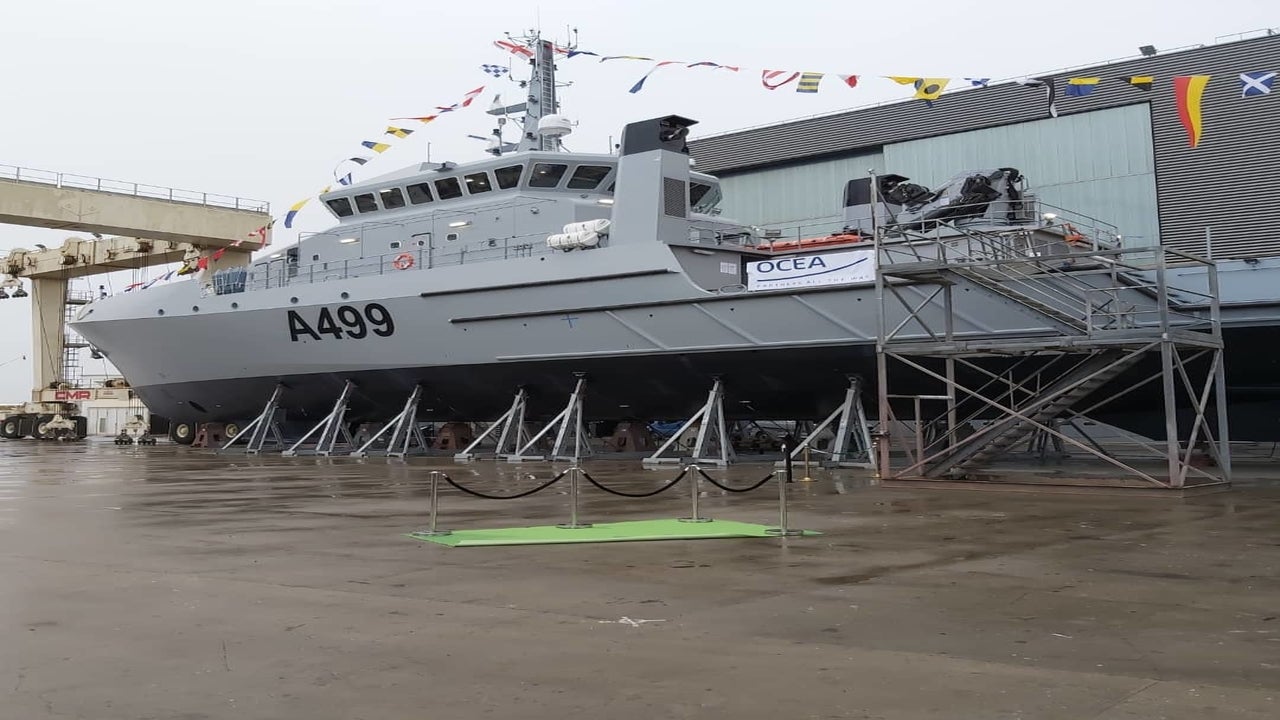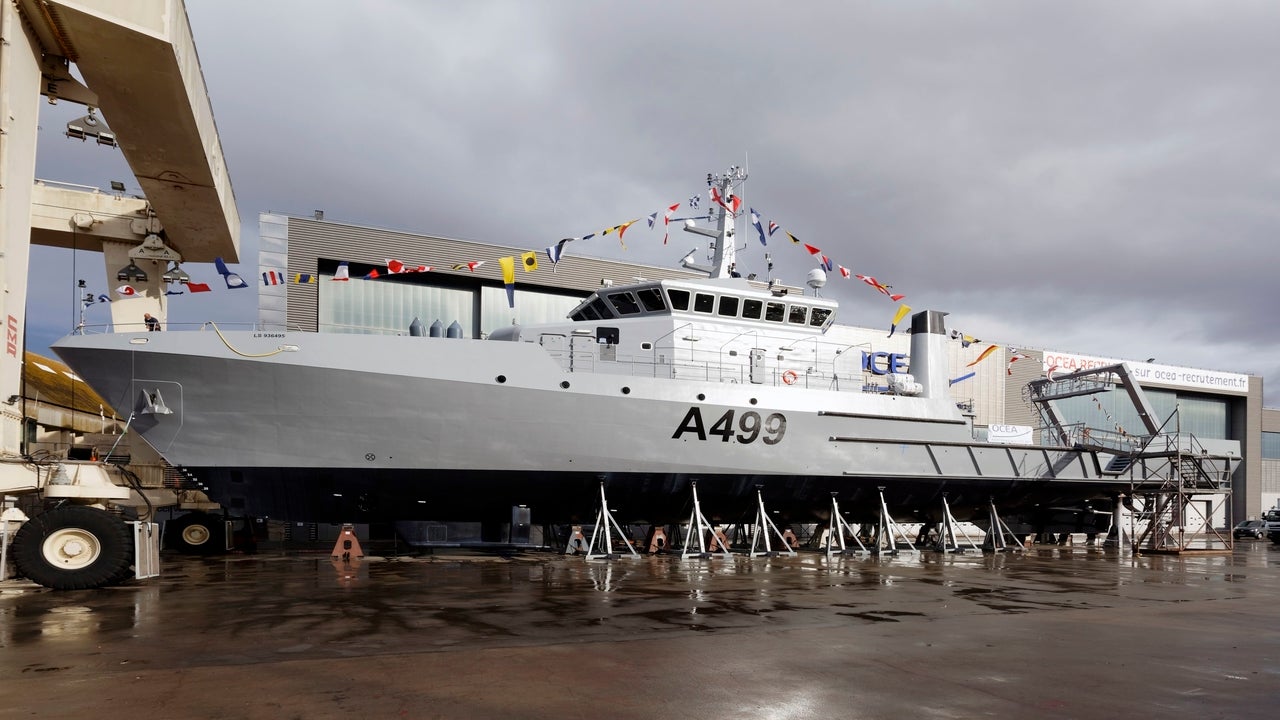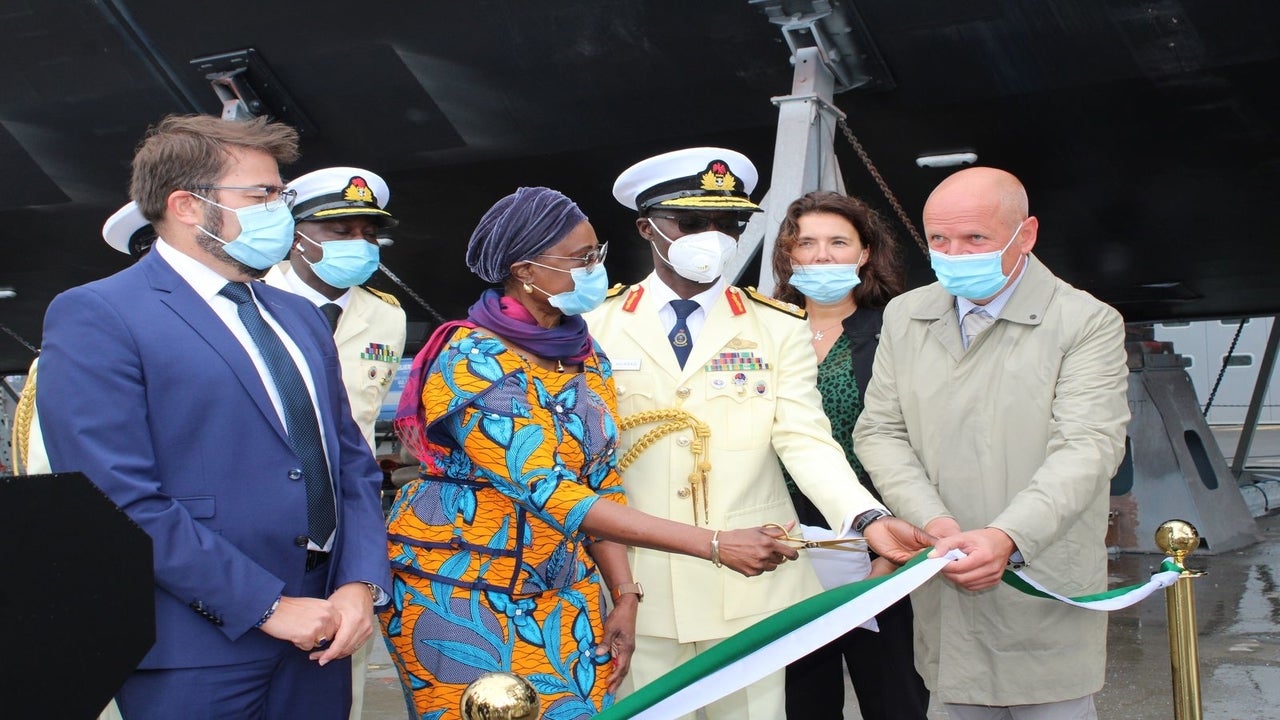The NNS LANA (OCEA OSV 190 SC-WB) hydrographic research vessel is the only purpose-built hydrographic and oceanographic survey vessel for the Nigerian Navy. The ship was constructed by French shipyard OCEA.
The Nigerian Navy took delivery of NNS LANA (A499) from OCEA in Saint Nazaire, France, in April 2021. The new ship is a replacement of the former Nigerian Navy survey ship NNS LANA, which was decommissioned more than a decade ago.
The hydrographic vessel is designed to enable the Nigerian Navy to perform missions such as oceanographic survey, hydrographic survey, search and rescue (SAR), fishery survey and patrol in the exclusive economic zone (EEZ) of Nigeria. The ship can also be used to support ship towing and helicopter winching operations as well as delivering assistance and supplies to other boats.
The vessel will also support the deployment of naval forces to provide enhanced maritime security in the Gulf of Guinea.
Construction of NNS LANA hydrographic research vessel
The Nigerian Government allocated N3.4bn ($9m) in the 2018 defence budget for the procurement of the hydrographic survey ship.
The Nigerian Navy awarded OCEA a contract for the construction of a hydrographic research vessel in April 2018. OCEA is also responsible for providing associated logistics support services, which will include on-site technical assistance as well as training to ensure the operational readiness of crew, on-board equipment and systems.
The NNS LANA survey ship was designed based on the OCEA’s offshore survey vessel (OSV) type OSV 190 and has been adapted to the specific requirements of the Nigerian Navy and Nigerian waters.
In September 2020, the vessel was launched at the OCEA production site in Les Sables d’Olonne, France. The ship was handed over to the Nigerian Navy following the completion of provisional acceptance trials in January 2021. The vessel is expected to join the Nigerian Navy’s fleet in May 2021.
The Indonesian Navy also operates two OSV 190 ships, KRI 933 RIGEL and KRI 934 SPICA.
Design and features
The NNS LANA hydrographic research vessel incorporates an all-aluminium hull design with optimised seakeeping performance.
The vessel has an overall length of 60.1m and can carry 34 crew and 16 personnel. It accommodates 115m² of laboratories and 160m² of aft deck.
The survey ship features an automatic weather station (AWS), which can be used for measuring atmospheric conditions from remote areas. The on-board dry and wet laboratories allow researchers to acquire scientific data while operating and processing rooms ensure the timely processing of survey data.
Survey equipment on board OCEA OSV 190 SC-WB ship
The NNS LANA survey vessel is equipped with state-of-the-art modern survey equipment to carry out coastal and deep-sea scientific research and studies. The on-board equipment includes a deep water multibeam echosounder, side scan sonar, single beam depth-water sounder and current meter.
The vessel also carries laboratory hardware and software as well as equipment and systems for sampling, storage and analysis of water, fish and sediment.
A well-equipped, 7.6m hydrographic surface boat is carried by the vessel to conduct data surveys along the coasts in small and very shallow waters.
Propulsion of NNS LANA
The propulsion system of the Nigerian Navy’s hydrographic research vessel integrates two MTU engines, three CAT main generator sets, one emergency generator and other auxiliaries.
It also includes an electric propulsion system, which is intended to minimise distortion of data caused by machinery noise. The electric propulsion system is operated at survey speed.
The maximum speed of the NNS LANA hydrographic research vessel is 14k. The ship has a range of 4,400nm at 12k and can endure at sea for 20 days.






